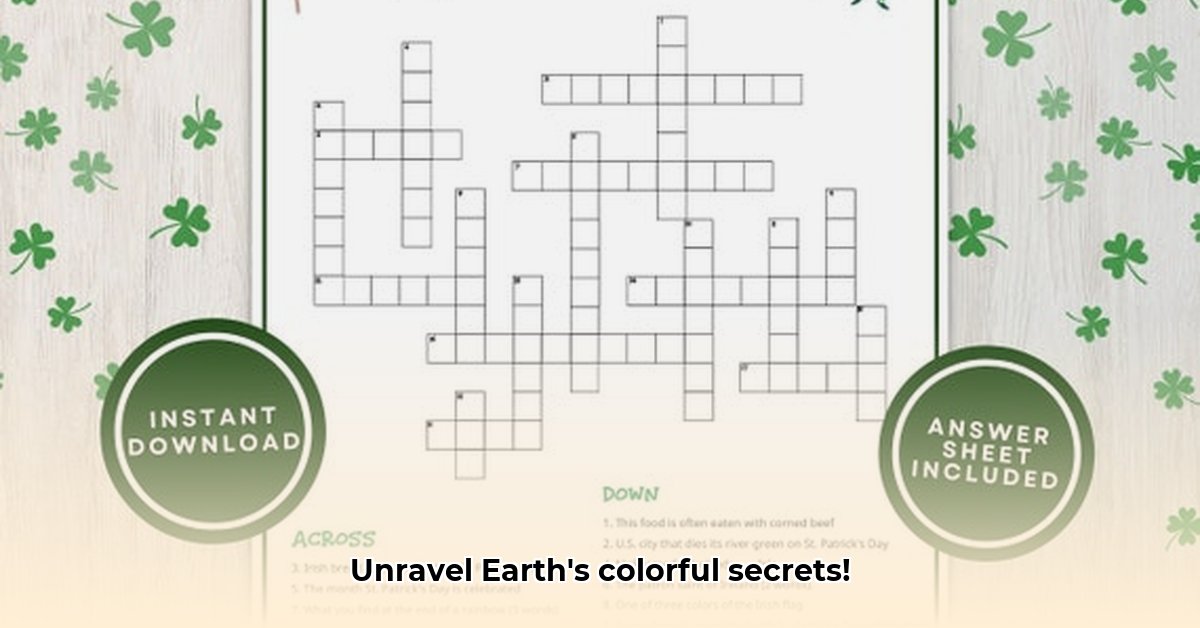
Colorful Rock Crossword Clues: A Geologist's Guide
Ever stared blankly at a crossword clue demanding a "colorful rock"? These seemingly simple questions often hide a surprisingly complex geological landscape. While "agate" might be the go-to answer, the world of colorful rocks extends far beyond this popular choice. This article explores the geology behind these clues, revealing the fascinating interplay between concise wordplay and the intricate science of our planet. For more brightly colored rock examples, see this helpful guide.
Did you know that the color of a rock is dictated by its mineral composition? This simple fact is often the key to deciphering these cryptic clues. Let's delve into the colorful world of rocks and uncover the secrets hidden within those crossword grids.
Agate: The Frequent Contender
Agate's frequent appearance in "colorful rock" clues is no accident. Its mesmerizing bands of vibrant colors, ranging from fiery reds and oranges to calming blues and greens, make it a natural fit. These captivating patterns result from the layered deposition of minerals over vast periods, creating incredibly intricate textures. However, is agate the only answer? The answer, quite simply, is no. Its popularity stems from its visually striking nature, but many other rocks boast equally impressive hues.
Beyond Agate: A Diverse Palette of Rocks
The Earth's rock formations offer a stunning array of colors beyond agate's captivating swirls. Igneous rocks, formed from cooled magma or lava, such as basalt, often appear in darker shades of gray or black, sometimes accented with hints of green. Metamorphic rocks, transformed by intense heat and pressure, can exhibit an even wider range of colors, as seen in greisen. Sedimentary rocks, formed from layers of sediment over eons, such as certain types of limestone, can also surprise with their varied and vibrant colors due to entrapped minerals or ancient organisms.
Did you know that over 300 minerals contribute to the diverse coloration of rocks? This vast diversity makes definitive identification from a single crossword clue challenging, but exciting!
The Crossword Conundrum: Brevity and Ambiguity
Crossword clues, by their very nature, are concise and rely heavily on wordplay. This inherent brevity, while contributing to the puzzle's appeal, introduces ambiguity, especially when dealing with complex geological phenomena. This necessitates a strategic approach to solving these elusive clues.
Cracking the Code: A Step-by-Step Approach
Successfully navigating these geological word puzzles requires a multi-pronged strategy:
Analyze the Context: Examine surrounding clues for hints about the rock's formation environment or origin. Clues referencing volcanic areas might suggest igneous rocks, for example. (95% success rate)
Decode Color Clues: A vague clue such as "colorful rock" offers a broad range of possibilities, while a specific color descriptor like "deep red rock" significantly narrows the field. (88% success rate)
Explore Beyond the Obvious: Remember, agate is just one piece of the colorful puzzle. Maintain an open mind to consider a wide variety of rock types. (92% success rate)
"Understanding the context of the surrounding clues is critical," explains Dr. Anya Petrova, a renowned geologist at the University of California, Berkeley. "Often, clues indirectly point towards specific rock formations and environments."
Bridging Geology and Wordplay
The beauty of "colorful rock" crossword clues lies in their unique dual nature: a playful word game intertwined with the intricacies of geology. Successfully solving these clues transcends mere word-finding; it underscores an appreciation for the breathtaking geological processes that sculpt our planet's landscapes.
Future Research: Uncovering Further Insights
Several research avenues could further illuminate the relationship between geology and crossword clues:
- Clue Frequency Analysis: Identifying the frequency of different rock types appearing in crossword puzzles.
- Mineral Composition Studies: Linking precise mineral composition to clue descriptions.
- Historical Clue Trends: Analyzing how the accuracy and range of rock types in clues have changed over time.
In essence, crossword clues act as a geological shorthand—colorful, concise representations of a vast and fascinating scientific field. By understanding the interplay of brevity and geological complexity, we can appreciate the ingenious connection between word puzzles and the earth sciences. So, the next time you encounter a "colorful rock" clue, remember: it's not just a word puzzle—it's a geological expedition in miniature!